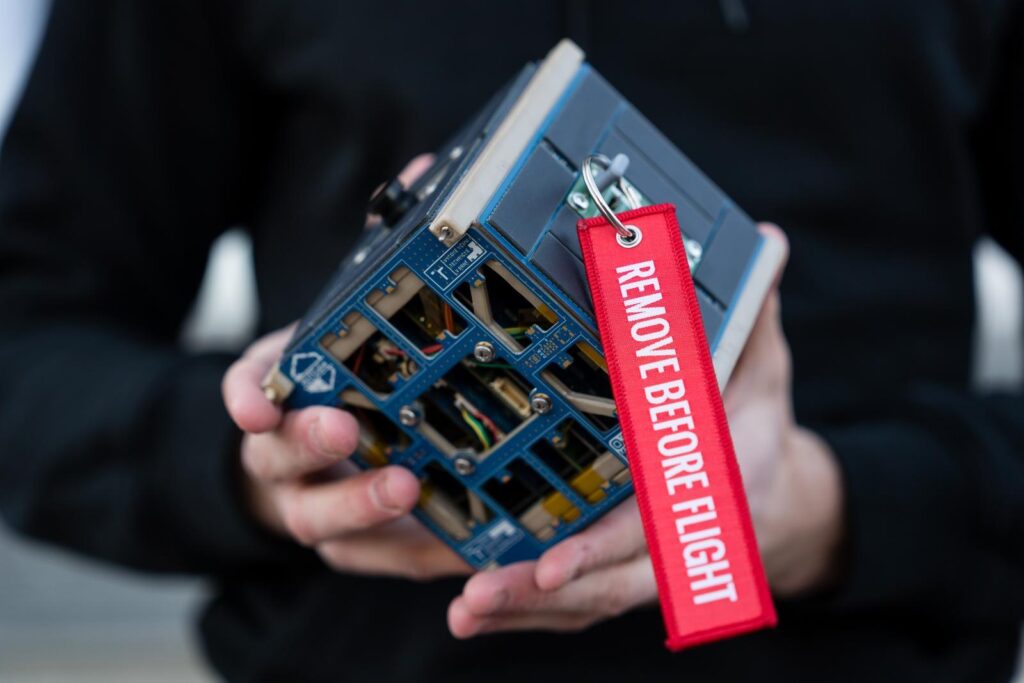A team of doctoral students from Brno University of Technology (BUT) has developed a 1U CubeSat engineering test unit, aiming to observe the solar corona during eclipses from space. Over two years, they designed and constructed this miniature satellite, known as BUTCube, to capture high-resolution images of the Sun’s corona during total solar eclipses. This mission seeks to complement the work of mathematician Miloslav Druckmüller, renowned for his unique images of the solar corona. The project has garnered interest from the University of Hawaii for potential collaboration.
The CubeSat, a compact 10x10x10 cm cube, is equipped with a high-resolution camera capable of capturing images in the visible spectrum. Positioned in low Earth orbit at altitudes between 400 and 600 kilometers, it aims to photograph the Sun’s corona without atmospheric interference. The satellite will transmit these images back to Earth, providing valuable data for solar research. The team calculated approximately fifty orbits for total solar eclipses over the next ten to fifteen years to ensure precise positioning during observations.
The interdisciplinary team comprises members from the Faculty of Mechanical Engineering and the Faculty of Information Technology at BUT. Their collaborative efforts have led to successful presentations at international conferences, including one at California Polytechnic State University, where the CubeSat standard was first introduced in 1999. The project’s ambitious mission has attracted attention from the global scientific community, leading to potential research grants and partnerships.

The primary objective of the BUTCube project is to develop and manufacture a 1U CubeSat engineering test unit with a scientific mission onboard. The five-member team is dedicated to advancing small satellite technology and contributing to space research through innovative engineering solutions.
The CubeSat’s mission involves entering a predetermined orbit to capture images of solar eclipses at specific times and locations. By observing from space, the satellite avoids issues related to atmospheric interference, allowing for clearer and more accurate data collection. This approach enhances the quality of solar corona observations, providing insights that are difficult to obtain from Earth-based observations.
The development of BUTCube also serves as an educational platform, offering students hands-on experience in satellite design, construction, and mission planning. This practical exposure prepares them for future careers in aerospace engineering and related fields, fostering a new generation of skilled professionals.

Collaborations with international institutions, such as the University of Hawaii, open avenues for shared research and resource exchange. These partnerships enhance the project’s scope and potential impact, contributing to the global body of knowledge in solar research and satellite technology.
The team’s dedication and innovative approach exemplify the spirit of scientific inquiry and technological advancement. By pushing the boundaries of what is possible with small satellite technology, they aim to make significant contributions to our understanding of the Sun and its influence on the solar system.
In summary, the BUTCube project represents a significant step forward in small satellite development and solar research. Through meticulous planning, interdisciplinary collaboration, and international partnerships, the team at Brno University of Technology is poised to make meaningful contributions to space exploration and scientific understanding.
Originals: BUTCube , Mladí vědci chtějí pomocí Cubesatu fotit zatmění Slunce z vesmíru – Nápady a objevy – Zprávy z VUT , Houstone, máme projekt! Doktorandi chystají první vývoj CubeSatu na VUT – Téma – Zprávy z VUT
